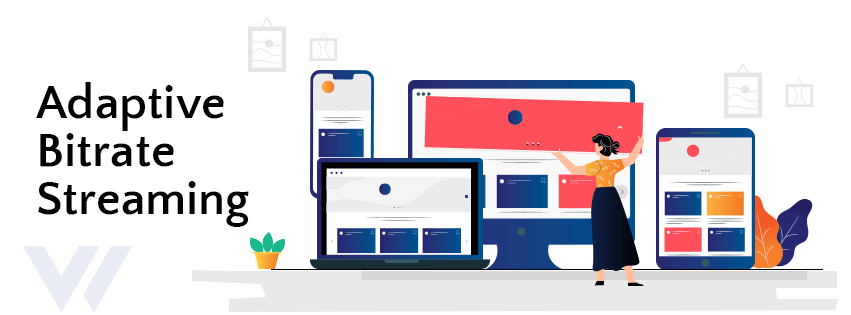Click here to Start adaptive bitrate livestreaming today!
“Connect with viewers_No matter where they are. Stream swift – Adapt with ABR Now!!”
Adaptive bitrate (ABR) streaming is a technology that was designed to deliver the video content to the end-users efficiently with the promising best quality of resolutions. It initiates dynamically and adjusts the compact level and video quality of a stream to match bandwidth availability.
Different devices and varying internet speeds are the major factors in delivering video content to your viewers. Both mobile devices and 4K home theatres evolution has made adequate-enough improvements on viewership experience. Adaptive bitrate streaming promises to auto-adjust stream resolutions and provide a great viewer’s experience to end-users watching videos through smart gadgets.
ABR technology provides the finest video quality and user experiences – no matter what the connection, software or devices are, it adapts.
BACKGROUND WORKS OF ABR STREAMING:
To increase the viewing experience across different devices and connection speeds, you’ll need the best transcoding process.
Webnexs video-on-demand system delivers ABR methodology with trio T’s: Transcoding, Transrating, and Transizing.
An explanation of trio T’s:
Transcoding: A simple term for taking a compressed/encoded file and decompressing/decoding it to alter it in another way. The manipulated file is then recompressed for delivery.
Transrating: Change the bitrate of the altered file to assist different connection speeds. This also includes changing the frame rate or resolution.
Transizing: Resize the video frame or resolution for displaying on different screens.
RISE OF “ABR” STREAMING:
The core concept is the “adaption” of video content. This feature enables viewers to watch different kinds of video content with an adaptive streaming resolution at any time and anywhere. Whenever the viewer’s internet connection changes, adaptive stream will switch back and forth between video qualities.
How it was possible?
Relax!! This is possible with the help of segments. Segments are the heart piece of adaptive streaming.
When video content is encoded to adaptive format, it is broken into segments. These are short particles of video, often set to 4-seconds long (also they can be longer or shorter). At the end of each 4-second segment, Video resolution may change depending on internet access.
Handling adaptive bitrate streaming technology, We have to overcome two main problems i.e Quality and Buffering.
The first problem is Quality. Adaptive streaming allows the content provider to create a different video for each of the screen sizes (or devices) to global audiences. By this, we can stream a specific video file to relevant specific screen sizes, ensuring that the viewer watches the video in clear resolution.
The diagram shows how it worked:
The second problem is Buffering. Buffering happens when a viewer is unable to download the content quickly enough to keep the video playing. Nowadays, streaming videos play at 24 frames per second, so it is mandatory to have a strong internet connection that downloads at least 24 frames every second to avoid buffer issues. Adaptive streaming can resolve this problem by “adapting” to the speed of the viewer’s internet connection.
For instance, We can download a small video file faster than a large video. Likewise, if a viewer has a slow internet connection, the adaptive video stream will often switch to smaller video file sizes to keep the video playing.
How it works:
Ever-increasing connectivity and more improvements in technology have heightened the viewer’s expectations. No one is willing to stick on a dreaded buffering icon in their smart devices. Thus results, the formation of Adaptive bitrate has become a necessary part of delivering video content on the internet.
Webnexs ABR streaming system provides flexible & adaptive bitrate delivery to the audience using our own servers whether they’re in on-premises or a third-party cloud platform.
Interested to know more about ABR? Get in touch for a free consultation now!


Leave a Reply